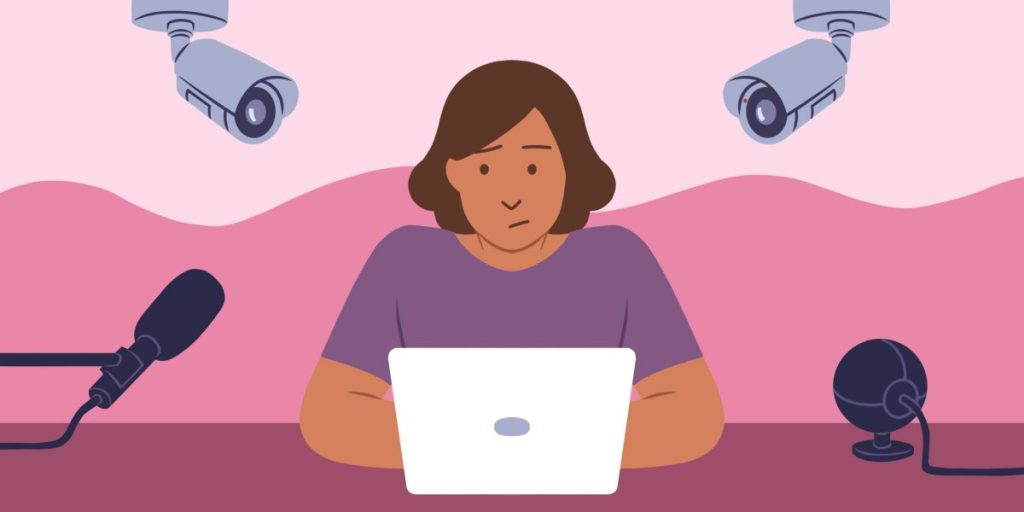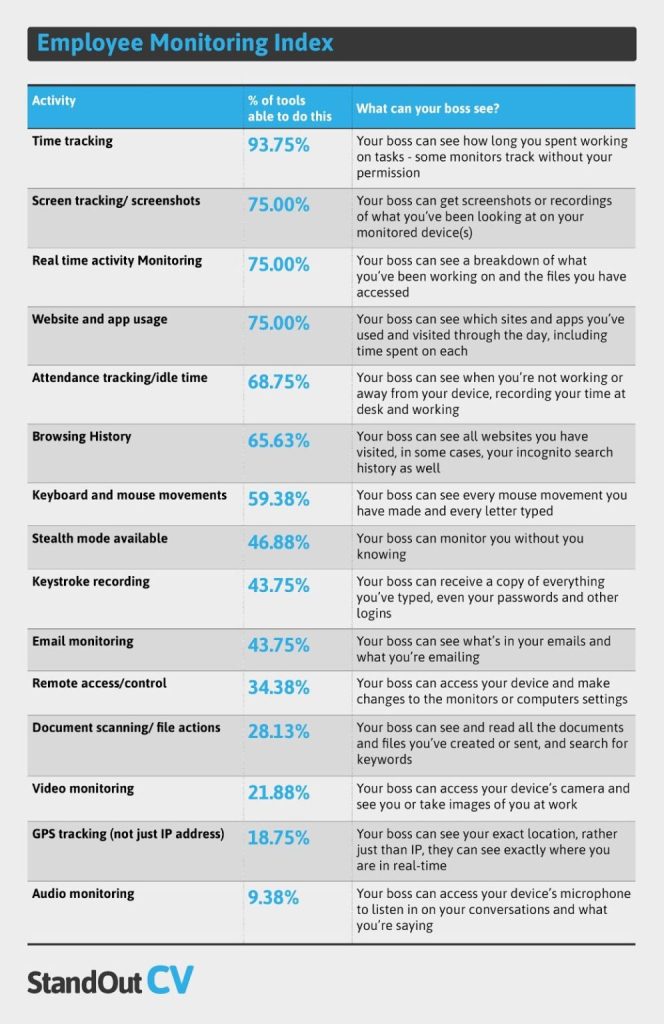The continuing nightmare of being controlled and rated at work around the clock by your computer.
This is the Dignity of Work?
BY:
Catherine Nicci
Legal Affairs Analyst / Reporter
PROJECT COUNSEL MEDIA
17 August 2022 (Washington, DC) – And we wonder why America has such high rates of depression and anxiety.
The nightmare of being controlled and rated at work around the clock by your computer. Each toilet break needs to be justified. Amazon has been the pioneer and now this digitalization of control spreads like malignant cancer. It is a global experiment, which will end like Taylorism ended, with the surprising insight that it doesn’t work because human beings are not machines.
Earlier this year I reported from the Big Data forum in Berlin, Germany. There were multiple sessions on data privacy and data protection – meaning the lack of any data privacy or data protection. Three sessions were devoted to the tracking and surveillance of employees by corporations. One U.S. based vendor said he has sold his company’s “time-and-attendance-tracking software” to almost every Fortune 1000 company and that software can spy on you in lots of other ways as well, way beyond time/attendance. It has tools that can record employees’ screens, monitor which apps or websites they’re using, monitor keyboard and mouse movements, etc. All of those tools run in a stealth mode, allowing employers to deploy the software on company-owned computers without workers’ knowledge.
NOTE: other data analysts at the forum noted there were even more insidious forms of employee monitoring in the U.S. embedded in the most popular surveillance software programs that can access a device’s camera to take pictures of their workers, support GPS tracking, listen in on employees through their computers’ microphones, monitor the use of an employee’s personal smart phone if at their desk, etc., etc.
The U.S. vendor I noted above said his software (as well as the software of his competitors) created boom times for the surveillance industry during the pandemic. And employers have decided to keep it.
You’ll recall StandOut CV’s study which quantified just how invasive this software has become across the board in the U.S. as vendors competed to offer the most comprehensive monitoring features. They provided this chart:
And not just the U.S. The massive European hypocrisy over personal data privacy and the General Data Protection Regulation (GDPR) as shown by presenters from London Metropolitan University and the Oxford Martin School at the University of Oxford (which studies data privacy issues in Europe) demonstrated that while the GDPR and the California Consumer Privacy Act in the U.S. helped to shift norms around data responsibility, there is no fundamental change in how the web works, so real data privacy is impossible. In Europe, illegal mass surveillance and bulk data mining goes on unabated, as does employer surveillance of employees.
All of this came to a wonderful focus this week (if wonderful is the correct word) in The New York Times series entitled “The Rise of the Worker Productivity Score”. It is behind New York Times paywall but we have permission to provide a copy on our Slideshare. The original piece goes into incredible detail with scores of links showing how, across numerous industries, employees are being tracked, recorded and ranked. It discusses what companies say is gained (efficiency and accountability) and what is lost (employee stability, loyalty to the employer and no end to anxiety).
The article is chock-a-block with information. The side panels and links (available through a subscription) will take you down the rabbit hole. A few points I found of note:
-For one of the IT companies using the surveillance software, none of the metrics accounted for the time it takes to learn how a system works. If you are a coder you spend lots of time not actively coding something new, but investigating the system, how it fits together. You building up a knowledge and experience base about the data. This knowledge helps the company. So according to the system, if you just thinking, examining, you are not working.
-The absurdity of some of things the software tries to measure. Let’s measure Rembrandt’s productivity by how many brush strokes he made per hour. That’s a sure way to determine if he’s a good painter or not.
-I asked my boss, Greg Bufithis, to comment and he said: “I think there are 100+ side panels and links in this piece and I did not go through them all. But look at some of the PNAS [Proceedings of the National Academy of Sciences] papers. You’ll find the same stuff I learned during my neuroscience program at Cambridge. When you use your brain, you can expect each brain’s structure at the network and circuit level to be different, and as a consequence, each brain’s release of glutamate (which fires up your brain) by task difficulty will be different each time. This means each brain responds to work differently, which cannot be tracked by apps that expect us to be robots instead of the variable, living beings we actually are. While it is true that businesses need competent, working workers, each person responds differently to the amount and type of work. This is not taken into account with apps. But what in hell would??!!”
-We constantly hear about how productivity goes up and up and up and how a person working today is doing so much more than someone working the same jobs in the last century. Yet, despite this, we continue to be squeezed more and more. Humans are being crushed into Robot shaped holes because bosses demand a ceaseless, inhuman pace to work these days, which is why this software is leading delivery drivers to pee in bottles. Even the basic human need of going to the bathroom is too inefficient. Dystopian worlds have nothing on the path we are heading down now.
NOTE: if you are a New York Times subscriber and you access the original (link also below), there is a simulation intended to give readers a sense of what productivity software is capable of and what it’s like to interact with. The New York Times drew on dozens of productivity programs and descriptions from hundreds of workers. Many sent in images of the tools in action, as well as internal guidelines and reports. The simulation uses metrics found in real monitoring tools, including time on page, idle and active time, and webcam photos. Not every program has all the features seen here (and some have far more). And for our eDiscovery readers, the simulation creates the same surveillance feel that many contract attorney reviewers experience during eDiscovery review projects.
To read the article on our Slideshare click here.
To read the original article on The New York Times click here.

